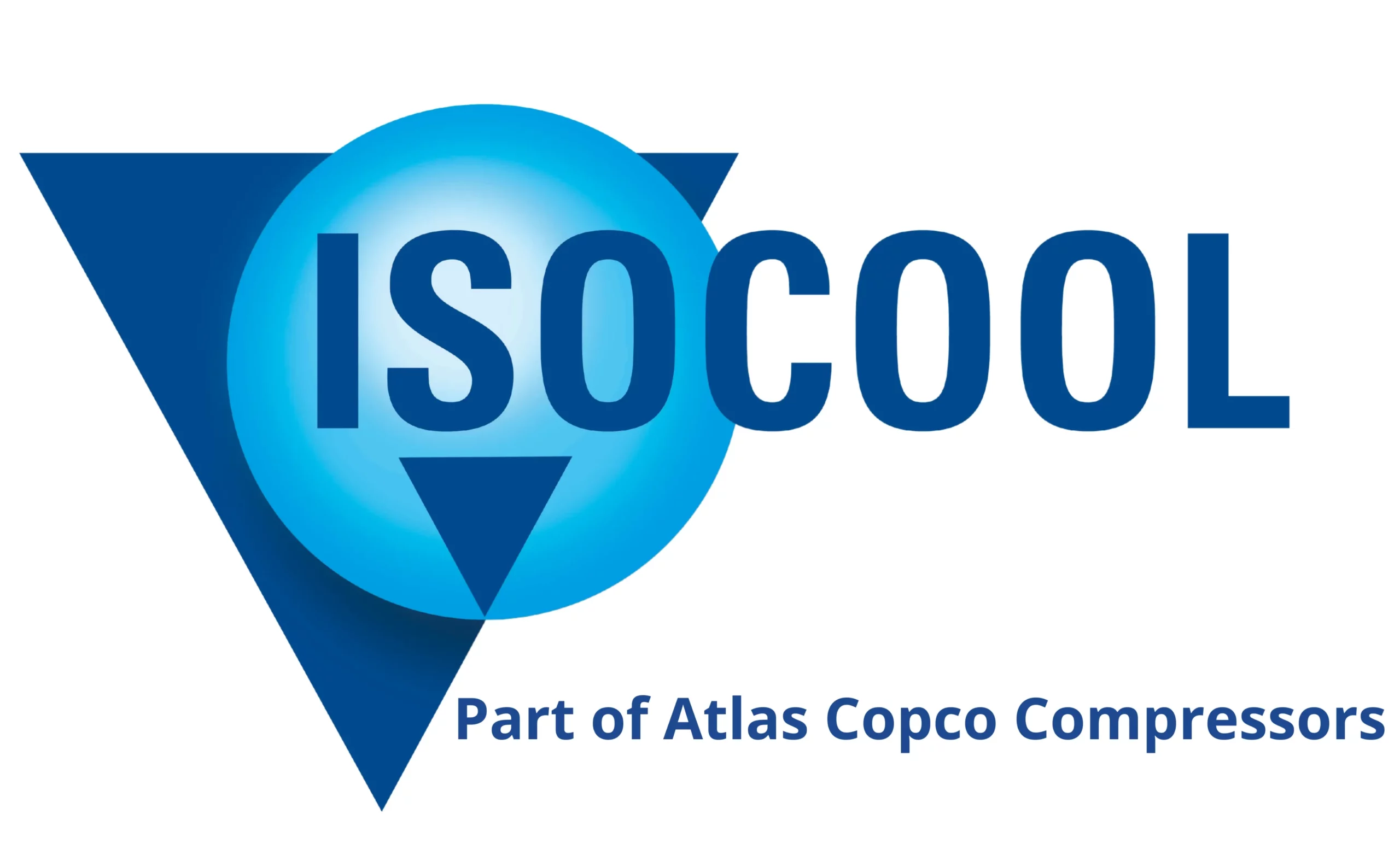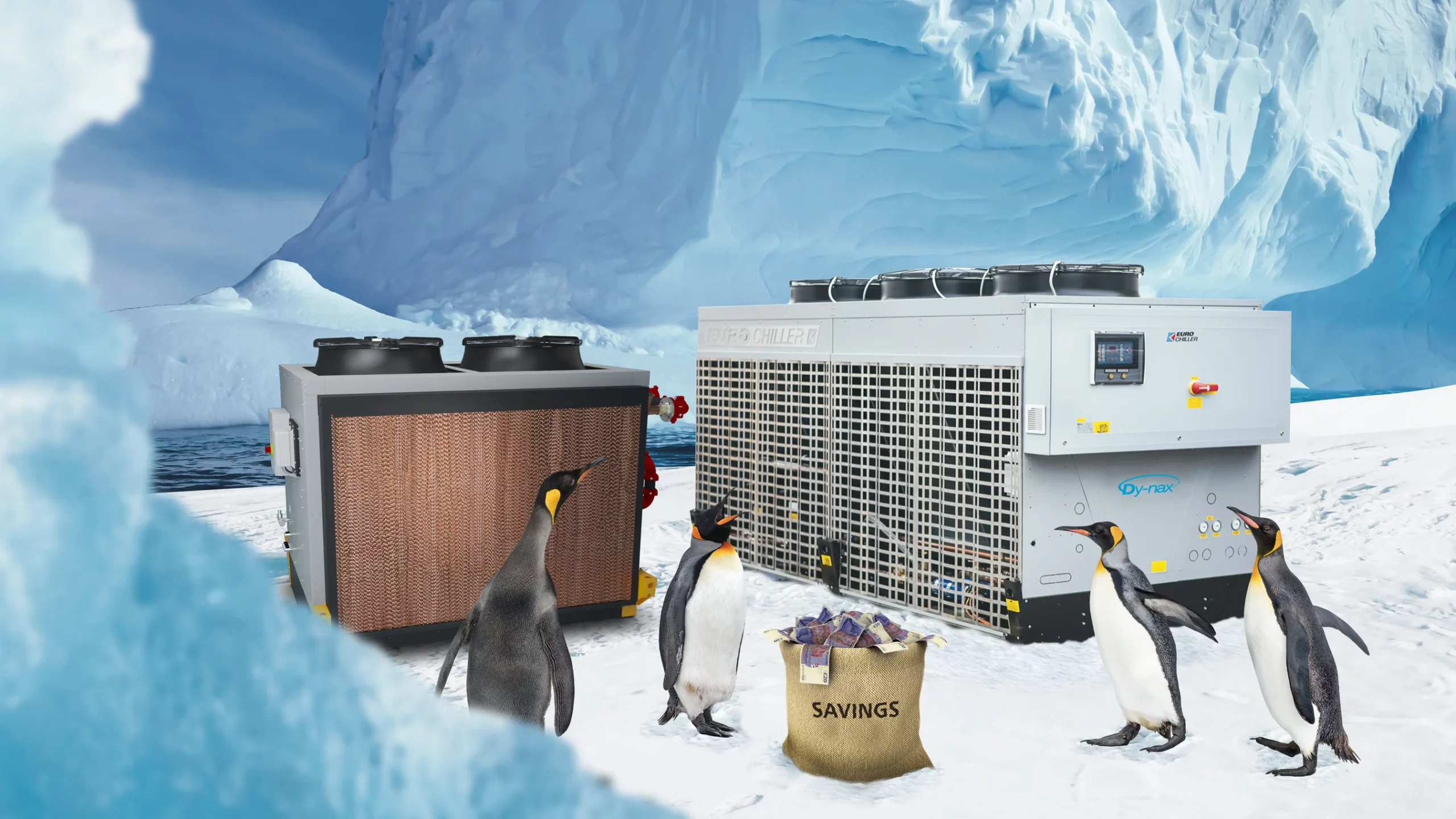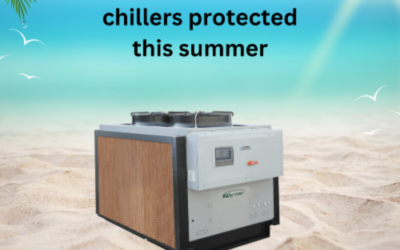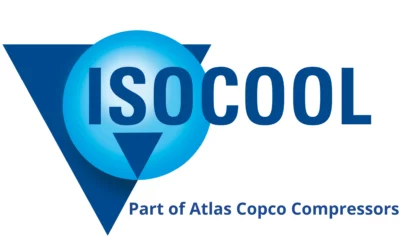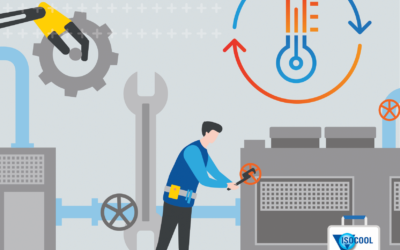Angus Hall, Business Line Manager, Atlas Copco Process Cooling Solutions, explains how an innovative cooling/chilling system can improve manufacturing costs, lessen environmental impact, and help industries realise energy savings. All this is achievable by reducing chiller usage with the use of adiabatic and free-air coolers during the colder months of the year.
In a wide variety of manufacturing operations, there is a need for process heat and for a means of reducing that heat with a water-cooling system. But in meeting these needs, what is not always factored in is the potential opportunity to reduce the running costs of energy, water treatment, and water supply involved in the process.
Centralised adiabatic and free air cooling
The traditional approach to industrial cooling is refrigeration. That usually means employing big chillers of a megawatt and beyond in capacity. For many applications, this may prove to be an expensive-to-run solution that is not always necessary and, furthermore, is not the only answer. It pays plant managers and finance teams to investigate a solution that will reduce chiller usage and improve the efficiency and energy consumption of their cooling and chilled water systems – namely, a centralised adiabatic and free-air cooling installation. A concept that generates plant efficiencies, realises energy savings, and minimises environmental impact.
Take advantage of the British climate
One of the ways to help achieve that aim is to take advantage of our temperate British climate, which is ideal for benefitting the plastics industry and other industries which rely on process cooling chillers. Met Office data shows that for 50% of the year, the average temperature is less than 10 degrees C − and that is beneficial for the optimum energy-saving process cooling proposition: simply, that it is not necessary for 24/7 cooling operations to depend on chillers alone 100% of the time. Dependent upon the process, a correctly designed and balanced smart system utilises adiabatic coolers with bridge heat exchangers in the cooler/cold periods of the year and energy-efficient chillers in the warmer periods, thereby taking full advantage of ambient conditions to reduce running costs.
Basically, it comes down to differing levels of power consumption. A chiller needs energy for the compressor and the refrigeration circuit, whereas a cooler only needs sufficient energy to power the cooling fans. A simple analogy to illustrate the differing principles is to think of a chiller as a refrigerator and a cooler as being a vehicle radiator that operates through airflow.
Chiller/cooler combination case study
Across industry the required process cooling temperature may vary widely. Pharmaceutical applications may operate at 10 degrees C, a commercial bakery’s need can be for a continuous 15 degrees C, and a distillery’s process will be in the region of 20 degrees C. But within the plastics industry, a case study of one specific application that requires multiple temperature levels clearly demonstrates that the energy efficiency of a process cooling system can be maximised by a combination of chillers and coolers when ambient temperatures allow.
In this instance, the plastics manufacturing company’s injection moulding operations required a process water cooling circuit in the region of 25-30 degrees C for the critical granule feed throat and 7-24 degrees C to enable the mould tool to be at the right temperature for cooling the plastic items to be released from the mould. At the same time, the hydraulics actuators involved required cooling between 10-18 degrees C.
In addition to two large chillers, adiabatic coolers were employed for both elements of the process. This was achieved by bridging the mould and hydraulic cooling circuits with a packaged heat exchanger unit, facilitating energy transfer without compromising circuit integrity.
In a transition period when the ambient temperature goes above 10 degrees, a chiller is needed to maintain the desired level. During low ambient temperatures, the combined system of this type can use the surplus capacity from an ambient cooling system, such as cooling towers, air blast, or adiabatic coolers, to pre-cool water returning from the chilled water circuit before it reaches the refrigeration plant, reducing the amount of energy that needs to be consumed. Whilst the circuits continue to function normally, the chiller plant is less utilised, extending the life span of its components, reducing the cost to the environment, and achieving significant energy savings.
Adiabatic coolers
The relative humidity of the air in the UK is 40 to 60% most of the time. Adiabatic cooling systems remove heat by evaporating water in a stream of warm, low humidity air. In the process of transition from a liquid to a gas, the evaporated water simultaneously humidifies and cools the air stream to within a few degrees of the wet-bulb temperature.
In the most efficient cooler concepts, large pads are saturated with water from their top edge to raise the relative humidity of the air close to 100%. Following the latent heat of evaporation process, damp air hitting the warmer surfaces creates a temperature drop and increases the efficiency of the cooler.
These coolers replace water spray cooling towers, pumps, and their power costs. At the same time, the risks of water spray and spills associated with Legionella generation are minimised. The cooler’s pad irrigation system features an auto cut-off when the saturation point is reached. As a closed feedback system, no water is wasted, and costs for water treatment and water make-up through evaporation and bleed-off are drastically reduced.
Significant savings and early payback
On the company’s original 2018 proposal, the total running cost of the existing system was calculated as £248,000 per annum, using an electricity unit cost of £0.056/kWh. The recommended centralised adiabatic cooling and chilled water systems with energy-saving control would reduce that down to £46,000 per annum with a payback period of 19.8 months. But that scenario, when reviewed against today’s electricity prices (assumed at 48p/kWh), would see running costs of the original system increase to £1,84m p.a. Yet even allowing for a 25% increase in capital costs since 2018, that figure would reduce dramatically to just £391,000. Furthermore, the payback would also reduce to as little as 3 ½ months. So, if on top of that substantial result, the government’s super tax deduction is taken into account, the proposition has to be a no-brainer for any financial controller.
Conclusion
In summary, a chiller/cooler combination system can lower manufacturing overhead and maintenance costs and reduce water consumption and carbon footprint/CO2 tonne equivalence. In addition, it minimises exposure to environmental risks such as Legionella and can improve water quality (when the system involves replacing cooling towers).
This new way of thinking about process cooling technology has resulted in a system that takes full advantage of the energy-saving opportunities presented by the UK’s temperate climate. The ability to reduce energy consumption results in substantial savings in electricity costs which in turn contributes to faster payback for capital investment.
Winterisation reminder for external chillers, free coolers and adiabatic coolers
Throughout the year we find many customers lose water from their systems through tool changes and/or process water losses and the top-up is more often than not made up from the standard water supply. Every year in the winter season we get service calls where the symptom is explained as a water leak. The root cause of this problem is frozen cooler coils or evaporators, and this has occurred due to reduced concentration of glycol/water mix in the process cooling fluid. We recommend that the glycol content of your systems should be at 30% which should provide protection down to 15°C and that you check your glycol concentrations with a refractometer and adjust your glycol levels accordingly.
Energy Saving Cooling Systems – Webinar
IsoCool’s Angus Hall has recorded a watch-on-demand webinar entitled ‘Energy saving cooling systems’. Sign up to discover how to achieve energy savings by lowering chiller usage with adiabatic and direct free air coolers during low ambient conditions:
ISOCOOL, part of Atlas Copco Compressors
Phone: +44 (0)1376 328 455
Isocool, part of Atlas Copco Compressors | Industrial cooling and refrigeration
